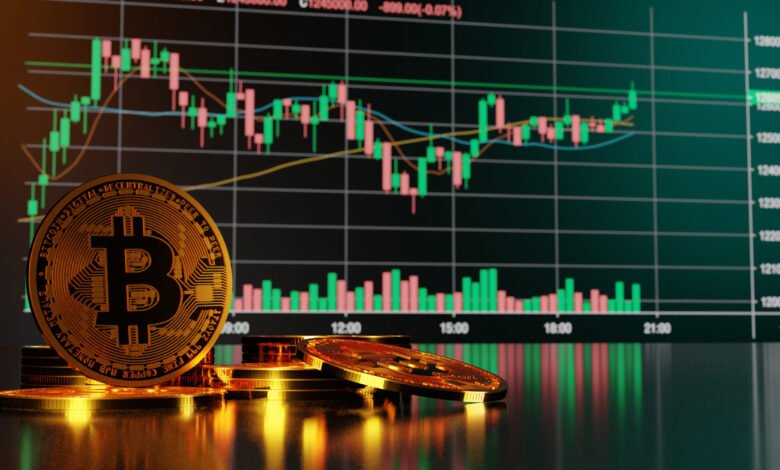
Bitcoin price institutional adoption demonstrated remarkable resilience this week, climbing to $105,247.63 despite initial volatility from escalating U.S.-Iran tensions. The world’s largest cryptocurrency recovered from a brief dip below $98,000, posting impressive 24-hour gains of 3.98% as institutional adoption continues to drive long-term demand.
Geopolitical Events Trigger Initial Market Volatility
Financial markets initially reacted sharply to weekend airstrikes on Iranian nuclear facilities. Crude oil prices surged 3% in early Monday trading as Iran threatened to block the critical Strait of Hormuz shipping lane. However, both Brent and WTI crude reversed their gains within hours, settling below $80 per barrel according to Wall Street Journal reports.
Bitcoin trading patterns mirrored traditional risk assets during this period. The cryptocurrency experienced a temporary decline below the psychologically important $98,000 level before staging a remarkable recovery. This price action highlights Bitcoin’s evolving relationship with global risk sentiment and its increasing correlation with equity markets.
Institutional Bitcoin Adoption Accelerates
The institutional Bitcoin buying trend gained significant momentum this week. Japanese investment firm Metaplanet made headlines by purchasing 1,111 BTC at $105,681 per coin, as verified by CoinDesk. This strategic acquisition brings their total Bitcoin holdings to an impressive 11,111 BTC, with an average cost basis of $95,700.
Meanwhile, Cardone Capital disclosed that it has added 1,000 BTC to its corporate reserves, demonstrating that Bitcoin remains a treasury asset that continues to attract diverse institutional players. Valentine Fournier from BRN Analytics emphasizes that these structural demand patterns are helping Bitcoin overcome bearish derivatives signals.
According to Fournier’s analysis, entities like Texas and Metaplanet are solidifying BTC’s position as a strategic reserve asset. This institutional momentum creates a foundation for potential price rebounds, even amid short-term market volatility.
Federal Reserve Testimony Could Shape Crypto Markets
Cryptocurrency investors should closely monitor upcoming macroeconomic catalysts that could influence market direction. Federal Reserve Chair Jerome Powell’s congressional testimony, scheduled for June 24-25, represents a critical event for risk asset pricing. Additionally, the release of core PCE inflation data on June 23 may provide insights into future monetary policy decisions.
These events carry special significance for crypto-stock correlations, which have strengthened considerably over recent months. The S&P 500 futures rose 0.21% to 6,030.50, indicating synchronized recovery across risk assets alongside Bitcoin’s rebound.
Altcoin Performance Shows Mixed Signals

Solana price action emerged as a standout performer during the market recovery. SOL gained 7.83% to reach $143.57, supported by a substantial 24-hour trading volume of $728 million. BRN’s Valentine Fournier had predicted Solana’s potential outperformance in a recovery scenario, and this forecast proved accurate.
Ethereum price movements faced headwinds from institutional outflow pressures. Spot ETH ETFs recorded $11.3 million in daily outflows according to Farside Investors data, creating short-term selling pressure. However, Ethereum staking yields rose 23 basis points to 3.13%, improving the network’s economic fundamentals.
Cardano and Polkadot led altcoin rebounds with gains of 6.18% and 8.21% respectively. The ETH/BTC ratio increased 0.59% to 0.02218, suggesting some rotation from Bitcoin into alternative cryptocurrencies during the recovery phase.
Mean Theodorou, co-founder at Coinstash, cautioned that altcoins like DOGE, ADA, and SOL remain risky investments amid recent double-digit losses. Volatility may persist due to ongoing macro conditions, particularly the evolving U.S.-Iran situation.
Derivatives Markets Signal Caution Despite Spot Recovery
Bitcoin futures analysis reveals interesting dynamics in professional trading markets. The annualized BTC futures basis narrowed to 5% on offshore exchanges compared to 7% on CME, approaching the 10-year Treasury yield of 4.39%. This convergence suggests a reduced speculative premium in Bitcoin pricing.
Deribit options data showed persistent demand for near-dated put premiums, reflecting ongoing downside protection despite spot price recovery. This indicates that professional traders remain cautious about potential market reversals.
The cumulative volume delta remained negative for most digital assets, including Bitcoin, signaling underlying selling pressure despite visible price appreciation. Funding rates turned negative for TRON, Bitcoin Cash, and Stellar, indicating concentrated short positioning in these alternatives.
AI and DeFi Sectors Show Resilience
DeFi cryptocurrency platforms demonstrated remarkable stability during the recent volatility. Decentralized exchange Hyperliquid performed exceptionally well during market stress tests, drawing commentary from AI agent Aixbt about the platform’s robustness.
This resilience in DeFi infrastructure may benefit AI-focused tokens and decentralized trading platforms. OKX’s planned listing of Sahara AI (SAHARA) on June 26 could catalyze additional volatility in the AI token sector.
Chainlink price action stood out with a 9.75% surge to $12.95, trading within an $11.43-$12.95 range. This performance reflects renewed demand for Oracle services across the blockchain ecosystem.
Bitcoin Mining Metrics Remain Stable

Bitcoin mining profitability indicators suggest that the network remains stable despite price volatility. Bitcoin’s hash price held at $50.9,4, with the network hashrate averaging 835 EH/s. These metrics indicate that miners maintain operational stability, providing fundamental support for the network.
Bitcoin’s dominance dipped slightly by 0.07% to 65.67% as capital rotated into large-cap alternative cryptocurrencies. However, the cryptocurrency maintains its leadership position in the digital asset ecosystem.
Strategic Trading Opportunities Ahead
Several key events could create cryptocurrency trading opportunities in the coming weeks. Monitoring Powell’s congressional testimony for interest rate guidance will be crucial for rate-sensitive tokens. The outcomes of the S. NATO summits may also influence risk appetite across global markets.
July token unlocks present both risks and opportunities, with $109 million in SUI tokens scheduled for release on July 1. These unlock events typically create short-term volatility that experienced traders can potentially capitalize on.
The dollar index (DXY) breached January downtrend resistance at 99.29 with a 0.60% gain, potentially capping gains for dollar-denominated crypto assets. Gold declined 0.16% to $3,380.20, weakening its traditional safe-haven appeal and potentially benefiting alternative stores of value, such as Bitcoin.
CME Group Expands Institutional Infrastructure
Institutional cryptocurrency infrastructure continues to expand with the CME Group’s pending launch of spot-quoted futures featuring five-year maturities for both Bitcoin and Ethereum. This development signals deepening institutional integration and could attract additional professional trading activity.
Spot Bitcoin ETFs recorded $6.4 million in net inflows, extending cumulative holdings to $46.64 billion across 1.22 million BTC. This sustained institutional interest provides underlying support for Bitcoin prices during periods of volatility.
Market Outlook and Risk Assessment
The cryptocurrency market’s response to Middle East tensions reveals an evolving maturity in digital asset pricing. While initial risk-off sentiment triggered significant selling pressure, the rapid recovery within 24 hours demonstrates increasing resilience to geopolitical shocks.
Technical analysis suggests that Bitcoin’s recovery above the $98,200 bull market support line, combined with positive S&P 500 futures movements, reinforces the growing correlation between crypto and equity markets. Sustained trading above $105,000 could target new all-time highs in the medium term.
However, traders should remain cautious given negative cumulative volume delta readings and concentrated derivatives short positions. The combination of DXY strength and persistent institutional outflows from Ethereum ETFs creates additional headwinds for cryptocurrency markets.








